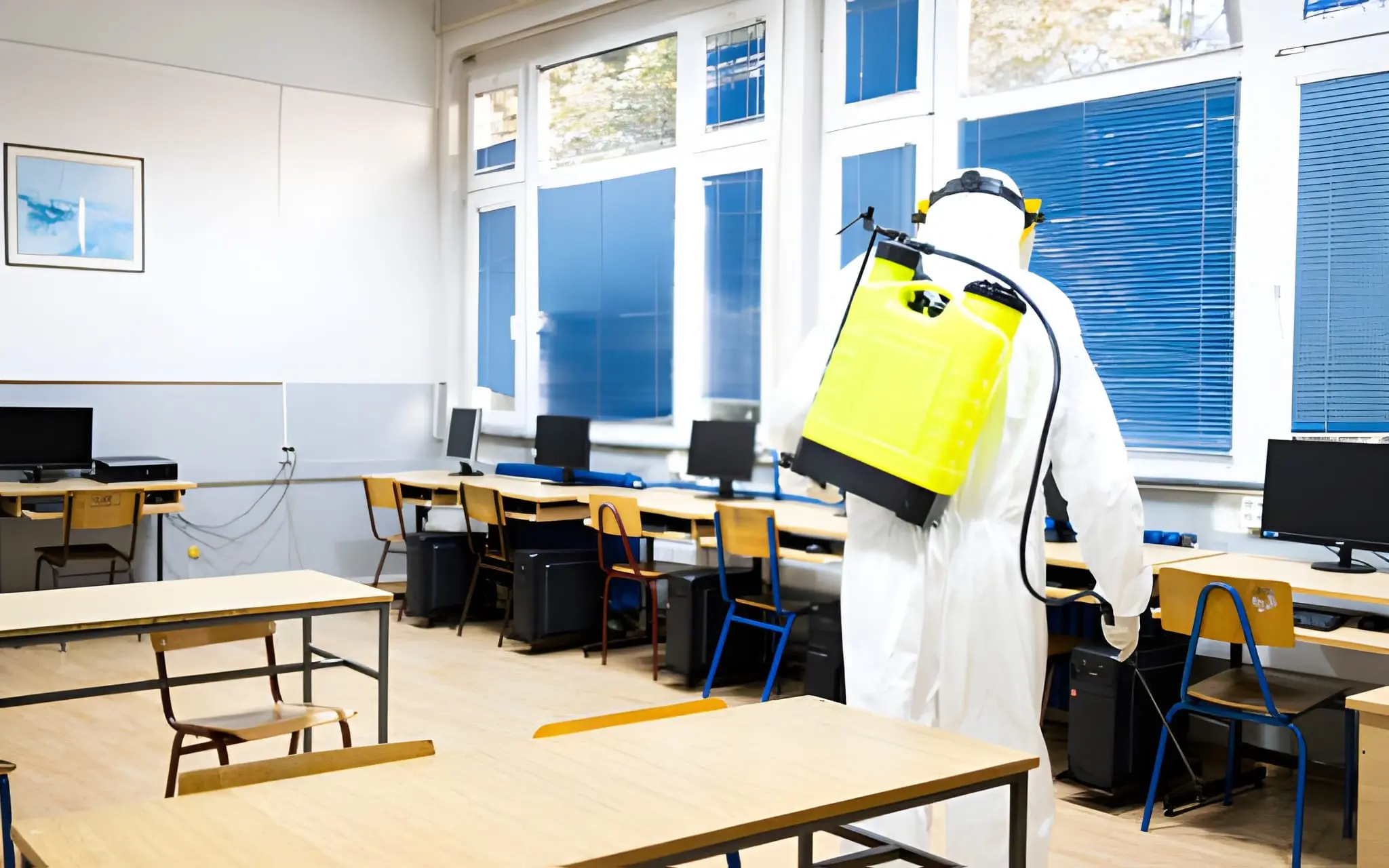Every parent wants to know that their child is safe when they head off to school. They think about lesson plans, social development, and the overall learning environment—but one of the most essential factors behind the scenes is often overlooked: cleanliness.
In classrooms, hallways, cafeterias, and restrooms, germs spread quickly. Shared desks, high-touch surfaces, and close contact among students create the perfect conditions for illness to move through a school in no time. While a quick daily cleaning helps keep things presentable, it is routine deep cleaning that truly makes the difference.
Creating a consistently clean and healthy learning environment does more than protect students physically—it promotes better attendance, supports teacher wellbeing, and reassures parents that the school is committed to safety and care.
Clean Classrooms, Clear Minds
Students spend most of their day indoors, surrounded by classmates, supplies, and shared equipment. If the air is stuffy or the surfaces are sticky, it is not just a distraction—it can be a health risk. Clean spaces help reduce the spread of common illnesses like colds and flu, while also minimizing allergy triggers such as dust, mold, and pollen.
Routine deep cleaning removes more than just visible dirt. It addresses buildup in places that daily custodial services may miss, including under furniture, along baseboards, or inside vents. These hidden areas can harbor bacteria and allergens that contribute to discomfort and illness among students and staff.
The result is a healthier atmosphere that supports focus and participation. When students feel comfortable in their space, they are more likely to engage, concentrate, and enjoy learning.
Supporting Staff and Reducing Burnout
It is not just students who benefit from clean spaces—teachers and school staff are also affected. Educators are already managing lesson plans, classroom behavior, and administrative duties. When they are also expected to sanitize surfaces or manage messes beyond their role, it adds unnecessary stress to their day.
A well-maintained school allows teachers to focus on what they do best: teaching. It also reduces staff sick days, improves morale, and helps maintain a sense of pride and professionalism throughout the campus.
That is why many school districts and private institutions now turn to services that specialize in comprehensive, scheduled cleaning. An experienced Educational Facility Cleaning Service can handle everything from daily disinfecting routines to periodic deep cleaning during breaks or holiday closures.
These services are built around the specific needs of educational environments and include safe, non-toxic products, eco-friendly practices, and careful attention to detail.
High-Touch Zones Require Special Attention
Within every school, there are areas that require more frequent and focused cleaning. These include:
- Door handles and light switches
- Desks and chairs
- Computer labs and tablets
- Water fountains
- Cafeteria tables and food preparation zones
- Gym equipment and locker rooms
Routine cleaning may address the surface level, but high-touch zones accumulate germs quickly. Without targeted deep cleaning, these areas become the primary channels through which viruses and bacteria spread.
A strong cleaning program builds these focus points into its schedule, ensuring consistent sanitation of the areas most at risk. When this attention is combined with proper ventilation and air filtration, the school becomes a safer space for everyone.
Clean Schools Build Parent Confidence
Parents often choose schools not just based on academics but on how the environment feels. Clean hallways, fresh-smelling classrooms, and well-maintained restrooms create a sense of security. It tells families that the school cares about their children’s experience.
This is especially important for younger children, who may be more sensitive to allergens and germs, or for students with health concerns. When families know that a school is professionally cleaned on a regular basis, it strengthens their trust and connection with the institution.
Open communication also helps. Schools that clearly share their cleaning protocols with families often find higher levels of satisfaction and community support. Parents appreciate knowing what steps are being taken to protect their children’s health.
Professional Cleaning Creates Long-Term Savings
Though some schools rely heavily on internal janitorial staff, adding outside support for scheduled deep cleaning offers long-term value. Regular maintenance helps preserve flooring, extend the life of furniture, and reduce the need for emergency repairs.
It also helps schools avoid closures or disruptions due to outbreaks. Preventative cleaning supports continuity, allowing students to stay in class and programs to run without interruption.
Many administrators find that investing in professional cleaning not only improves daily operations but also saves money over time by reducing damage and health-related absences.
Services from trusted providers like EnviroClean are tailored to meet the needs of schools both large and small. They provide the structure, consistency, and specialized knowledge required to maintain safe, healthy learning environments throughout the school year.
More Than Clean—Prepared for the Future
As the role of education continues to evolve, so do the standards for what a learning environment should offer. Technology, curriculum, and classroom design are all important, but none of it works well without a foundation of safety and cleanliness.
Clean schools are prepared schools. They are ready for seasonal illnesses, unexpected challenges, and the growing expectations of families and communities. They support academic achievement not just through instruction, but through the spaces where learning takes place.
By treating cleanliness as a core value—not an afterthought—schools create environments where students, teachers, and families can thrive together.
Also Read-Top 5 Trends in Window and Door Design for Modern Homes

